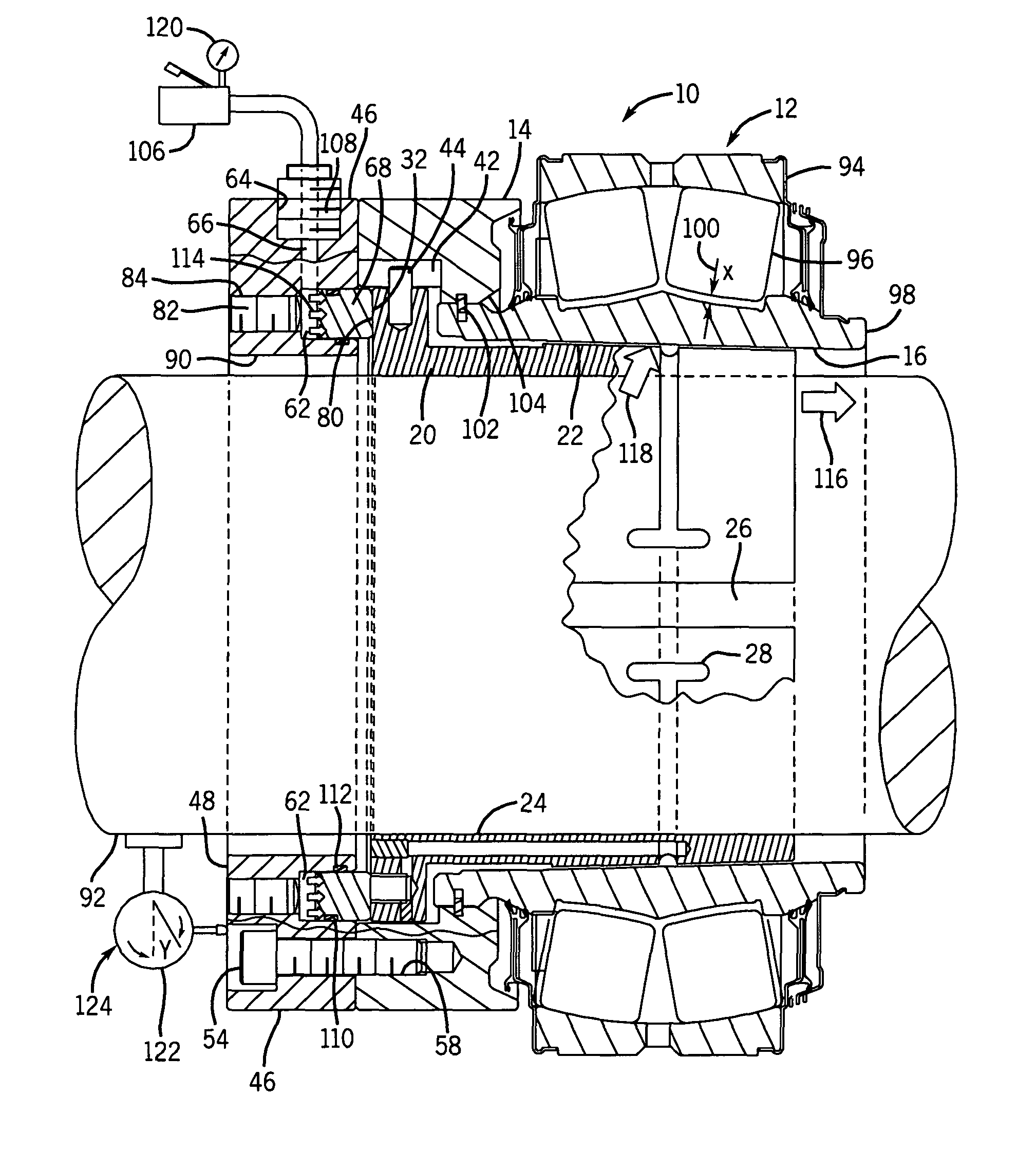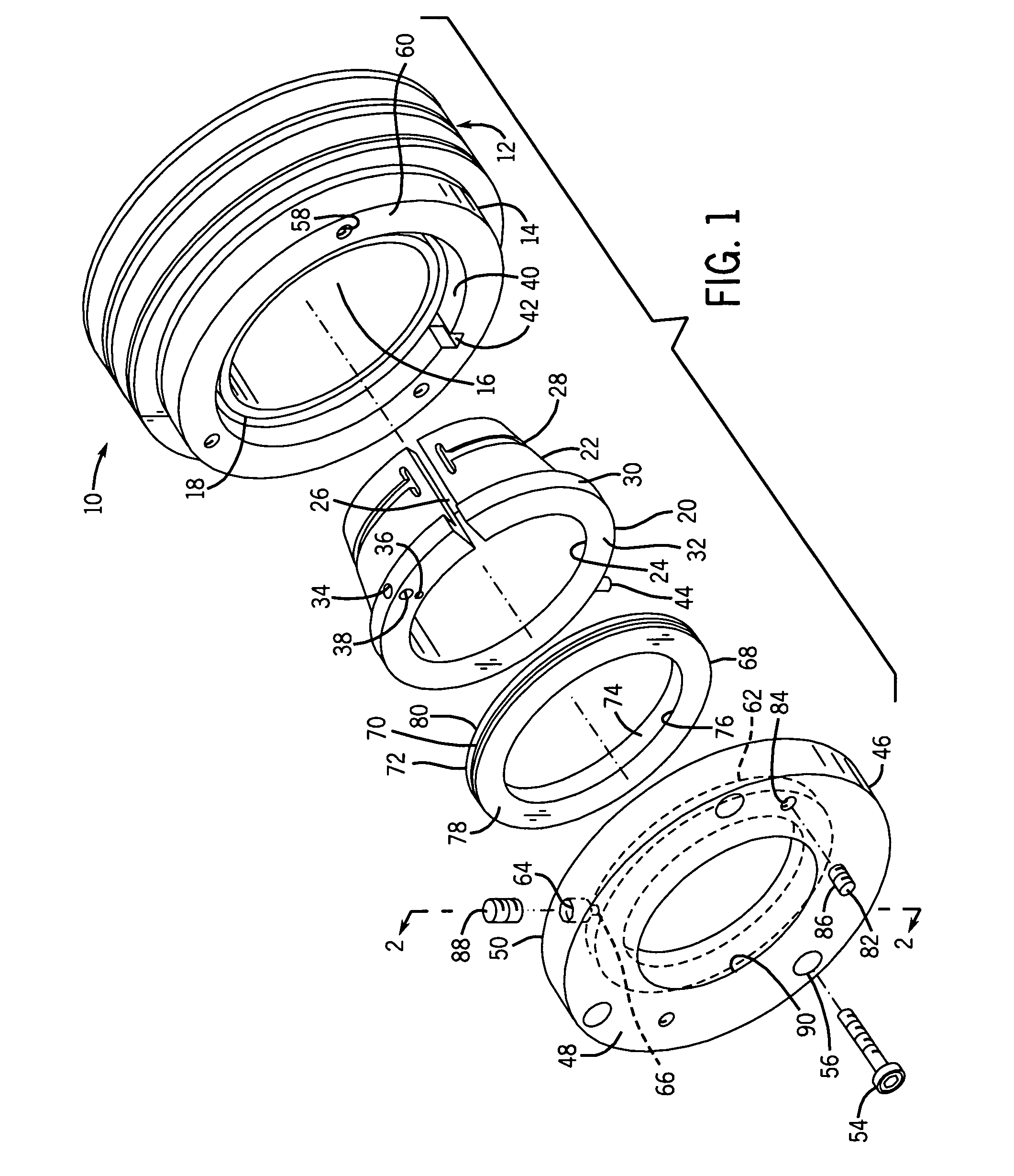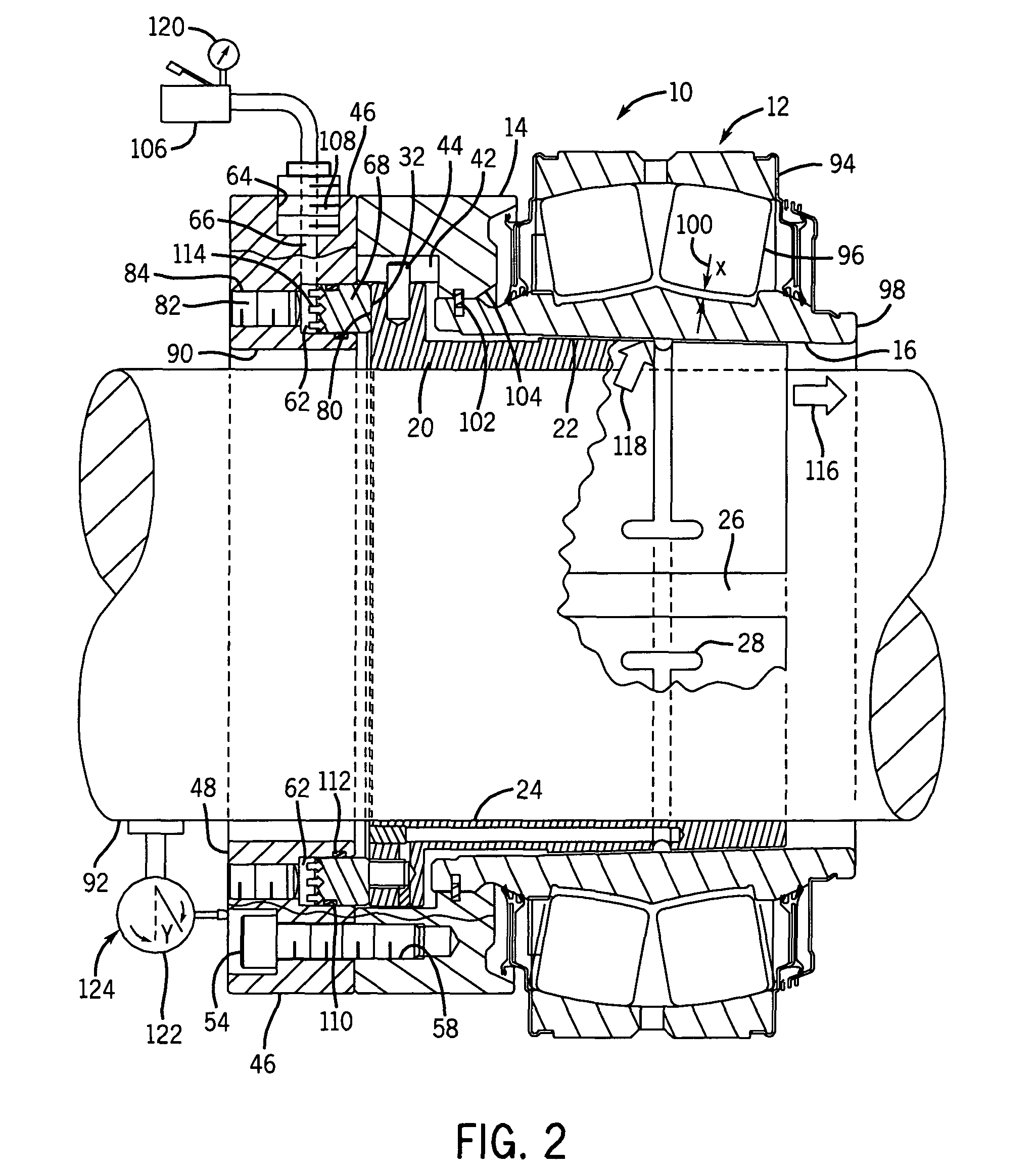Hydraulically positioned shaft bearing attachment system and method
a technology of hydraulic positioning and shaft bearings, applied in the direction of bearings, roller bearings, shafts, etc., can solve the problems of reducing the service life of the bearing, so as to reduce the frictional loss in the drive mechanism. , accurately determine the final position, and the effect of constant load
- Summary
- Abstract
- Description
- Claims
- Application Information
AI Technical Summary
Benefits of technology
Problems solved by technology
Method used
Image
Examples
Embodiment Construction
[0018]Turning now to the drawings, FIG. 1 illustrates the elements of the hydraulically positioned bearing attachment system in accordance with an exemplary embodiment of the invention. The system includes a bearing kit 10 comprising of a bearing assembly 12 and an internal flange 14. The bearing assembly 12 has a tapered inside diameter 16 and a guide diameter 18 to radially locate and mate with an internal diameter of the internal flange 14. A sleeve 20 having a tapered outside diameter 22 engages the tapered inside diameter 16 of the bearing assembly 12. The sleeve 20 has a uniform inside diameter 24 and an axial split 26 allowing it to clamp down on a circular shaft when the outside diameter 22 is engaged. It should be noted that the present system may be employed with components that are differently configured, particularly insomuch as the engaging tapers are concerned. For example, to avoid tapering the inside of the bearing assembly itself, another sleeve may be interposed in...
PUM
| Property | Measurement | Unit |
|---|---|---|
| diameters | aaaaa | aaaaa |
| diameter | aaaaa | aaaaa |
| pressure | aaaaa | aaaaa |
Abstract
Description
Claims
Application Information
 Login to View More
Login to View More - R&D
- Intellectual Property
- Life Sciences
- Materials
- Tech Scout
- Unparalleled Data Quality
- Higher Quality Content
- 60% Fewer Hallucinations
Browse by: Latest US Patents, China's latest patents, Technical Efficacy Thesaurus, Application Domain, Technology Topic, Popular Technical Reports.
© 2025 PatSnap. All rights reserved.Legal|Privacy policy|Modern Slavery Act Transparency Statement|Sitemap|About US| Contact US: help@patsnap.com



